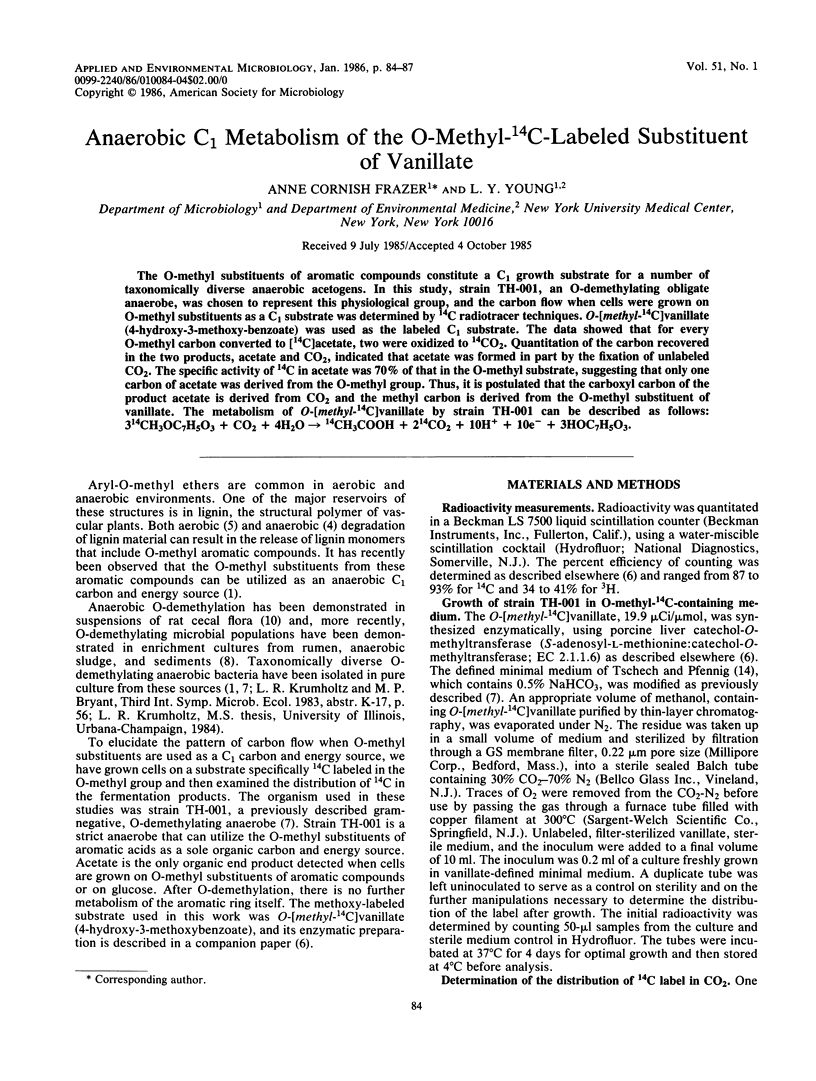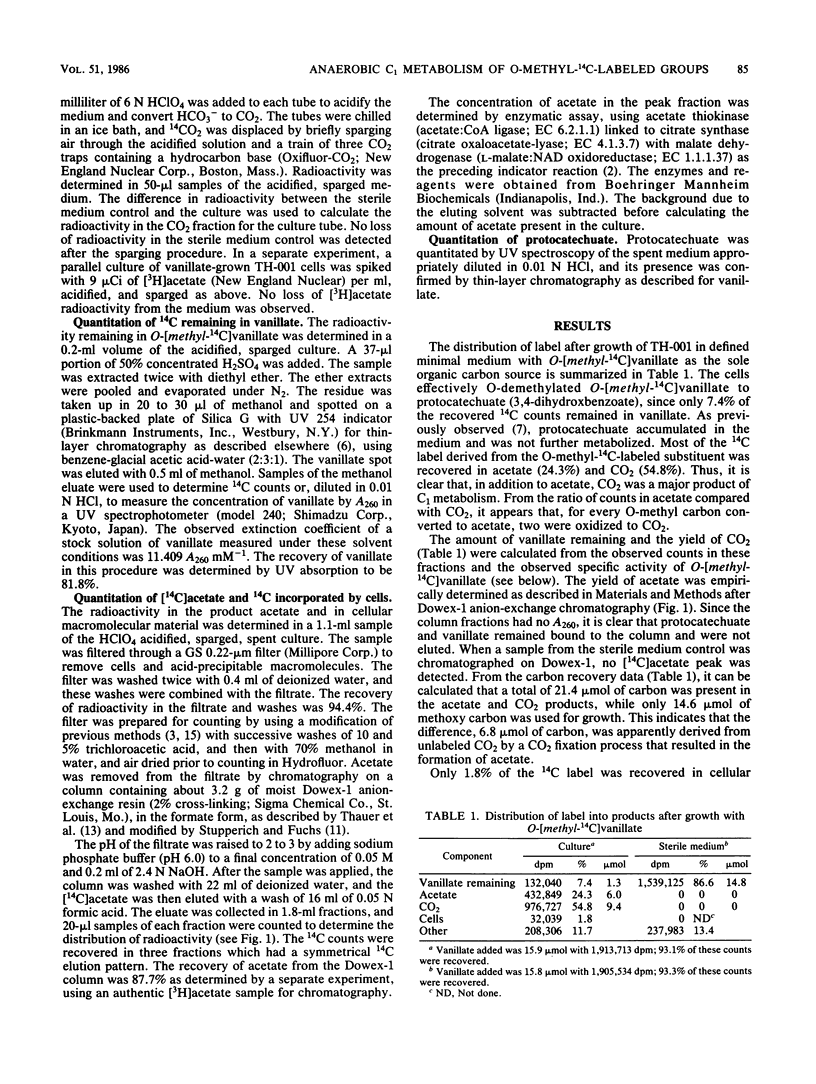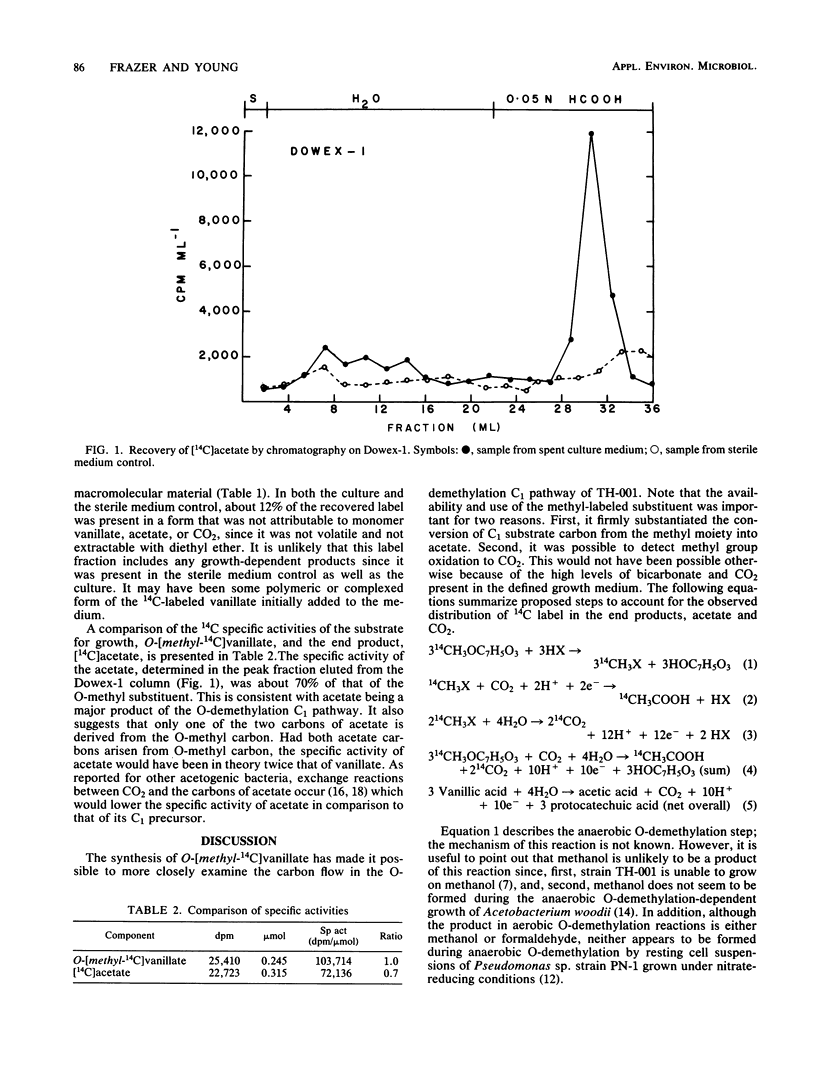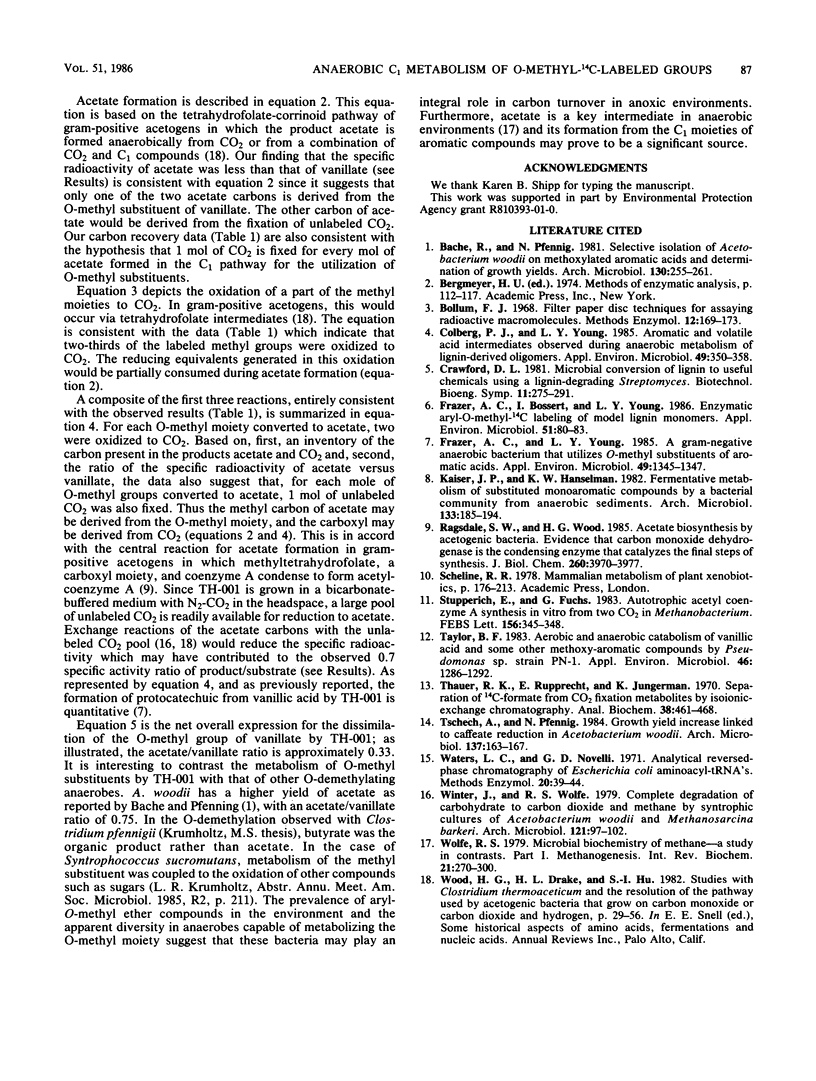Abstract
The O-methyl substituents of aromatic compounds constitute a C1 growth substrate for a number of taxonomically diverse anaerobic acetogens. In this study, strain TH-001, an O-demethylating obligate anaerobe, was chosen to represent this physiological group, and the carbon flow when cells were grown on O-methyl substituents as a C1 substrate was determined by 14C radiotracer techniques. O-[methyl-14C]vanillate (4-hydroxy-3-methoxy-benzoate) was used as the labeled C1 substrate. The data showed that for every O-methyl carbon converted to [14C]acetate, two were oxidized to 14CO2. Quantitation of the carbon recovered in the two products, acetate and CO2, indicated that acetate was formed in part by the fixation of unlabeled CO2. The specific activity of 14C in acetate was 70% of that in the O-methyl substrate, suggesting that only one carbon of acetate was derived from the O-methyl group. Thus, it is postulated that the carboxyl carbon of the product acetate is derived from CO2 and the methyl carbon is derived from the O-methyl substituent of vanillate. The metabolism of O-[methyl-14C]vanillate by strain TH-001 can be described as follows: 314CH3OC7H5O3 + CO2 + 4H2O → 14CH3COOH + 214CO2 + 10H+ + 10e- + 3HOC7H5O3.
Full text
PDF



Selected References
These references are in PubMed. This may not be the complete list of references from this article.
- Colberg P. J., Young L. Y. Aromatic and Volatile Acid Intermediates Observed during Anaerobic Metabolism of Lignin-Derived Oligomers. Appl Environ Microbiol. 1985 Feb;49(2):350–358. doi: 10.1128/aem.49.2.350-358.1985. [DOI] [PMC free article] [PubMed] [Google Scholar]
- Frazer A. C., Bossert I., Young L. Y. Enzymatic aryl-o-methyl-C labeling of model lignin monomers. Appl Environ Microbiol. 1986 Jan;51(1):80–83. doi: 10.1128/aem.51.1.80-83.1986. [DOI] [PMC free article] [PubMed] [Google Scholar]
- Frazer A. C., Young L. Y. A gram-negative anaerobic bacterium that utilizes o-methyl substituents of aromatic acids. Appl Environ Microbiol. 1985 May;49(5):1345–1347. doi: 10.1128/aem.49.5.1345-1347.1985. [DOI] [PMC free article] [PubMed] [Google Scholar]
- Ragsdale S. W., Wood H. G. Acetate biosynthesis by acetogenic bacteria. Evidence that carbon monoxide dehydrogenase is the condensing enzyme that catalyzes the final steps of the synthesis. J Biol Chem. 1985 Apr 10;260(7):3970–3977. [PubMed] [Google Scholar]
- Taylor B. F. Aerobic and Anaerobic Catabolism of Vanillic Acid and Some Other Methoxy-Aromatic Compounds by Pseudomonas sp. Strain PN-1. Appl Environ Microbiol. 1983 Dec;46(6):1286–1292. doi: 10.1128/aem.46.6.1286-1292.1983. [DOI] [PMC free article] [PubMed] [Google Scholar]
- Thauer R. K., Rupprecht E., Jungermann K. Separation of 14C-formate from CO2 fixation metabolites by isoionic-exchange chromatography. Anal Biochem. 1970 Dec;38(2):461–468. doi: 10.1016/0003-2697(70)90471-9. [DOI] [PubMed] [Google Scholar]
- Winter J., Wolfe R. S. Complete degradation of carbohydrate to carbon dioxide and methane by syntrophic cultures of Acetobacterium woodii and Methanosarcina barkeri. Arch Microbiol. 1979 Apr;121(1):97–102. doi: 10.1007/BF00409211. [DOI] [PubMed] [Google Scholar]


